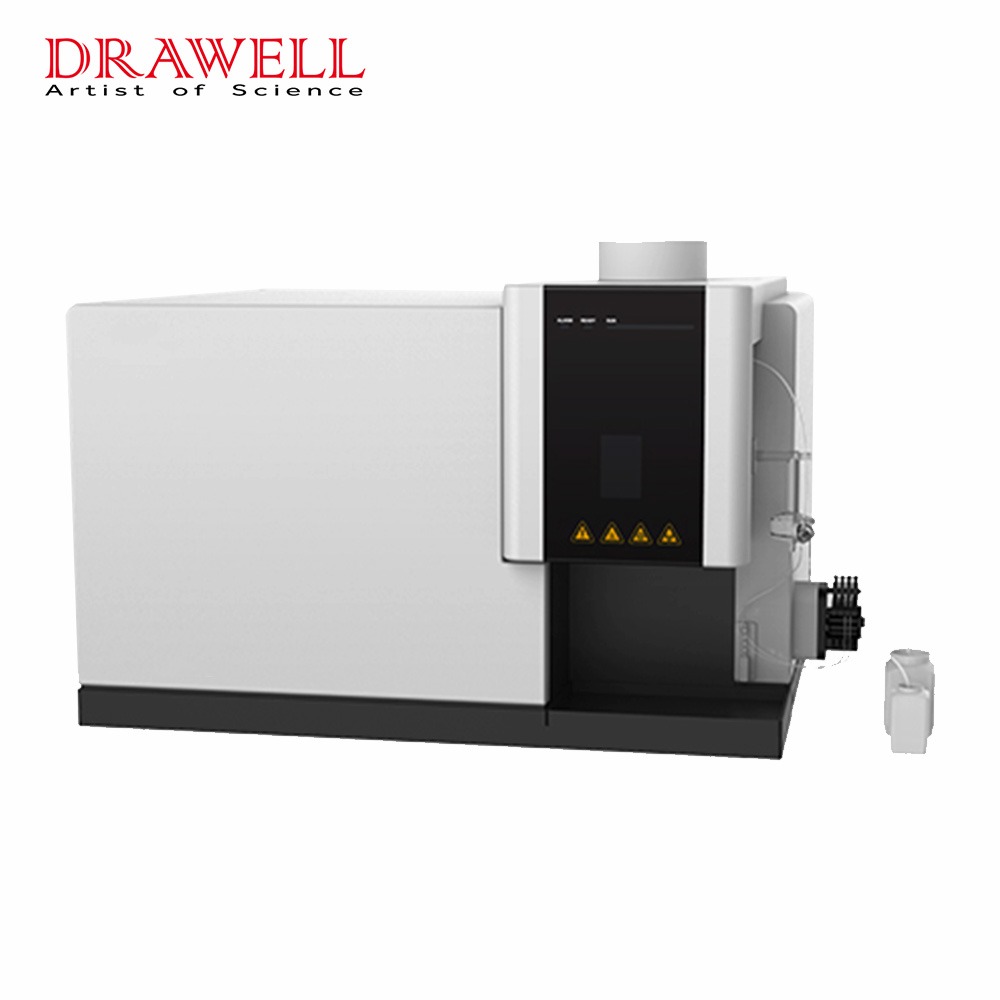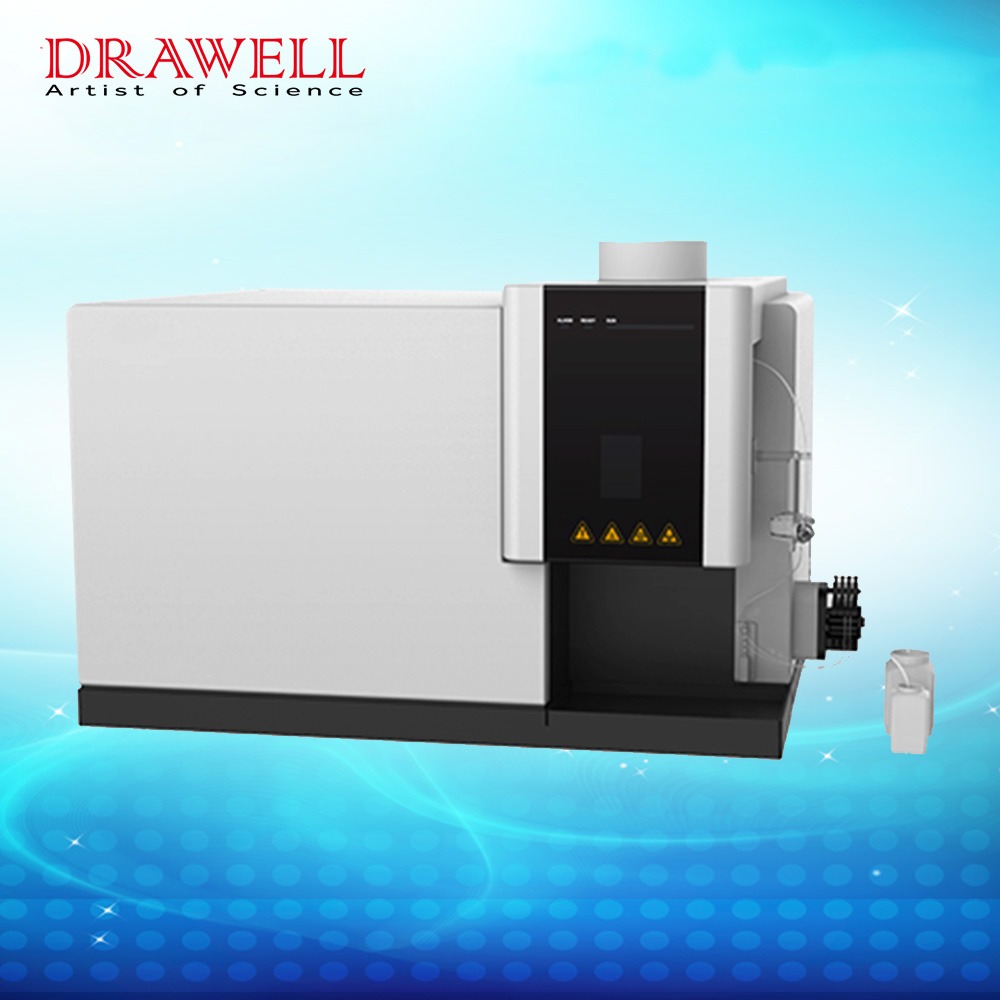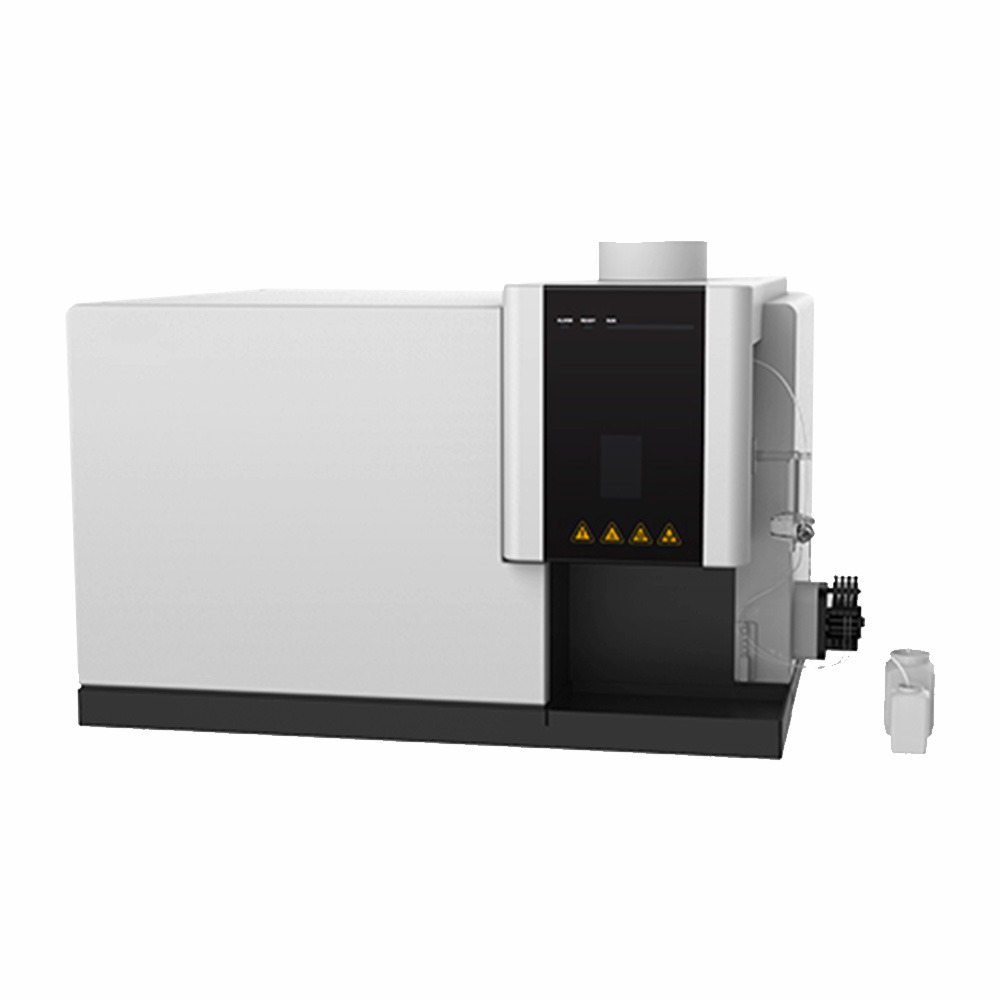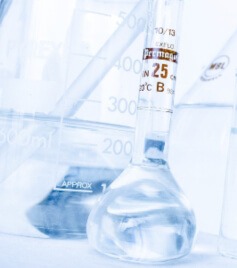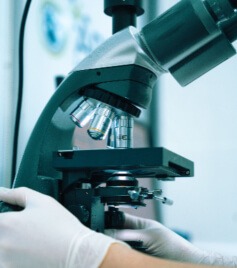ICP-ES DW-EXPEC6000D Inductively Coupled Plasma Optical Emission Spectrometer
As a new-generation heavy metal analysis system, the ICP-ES can be used in coordination with the autosampler, automatic graphite digestion system and other hyphenated techniques.
The instrument has been widely applied in the fields including water quality, soil, atmospheric particulates, solid wastes, food, animals and plants, food-contact materials, cosmetics, semiconductor, high-purity materials, mineral products, petrochemical engineering, industrial products and textile, and meets the requirements of relevant national standard analysis methods.
Specifications of ICP-ES DW-EXPEC6000D Inductively Coupled Plasma Optical Emission Spectrometer
| Analysis speed | about 200 spectral lines each minute | ||||
| Sample consumption | only 2 ml | ||||
| *Determined spectral linear dynamic range | ≥105 (determined with Mn257.6nm, and the correlation coefficient ≥0.999) | ||||
| *Precision | determine 1 ppm or 10 ppm multi-element mixed standard solution; the RSD obtained after ten times of measurement ≤0.5% | ||||
| *Stability | determine 1 ppm or 10 ppm multi-element mixed standard solution; the long-time stability after continuous 2 hours’ measurement, RSD, ≤ less than 1%, and 4 hours’ long-time stability, RSD, ≤2% | ||||
| Detection limit | (Unit: ug/L; as per the elements specified in JJG768-2005) | ||||
| Zn213.856 | Ni231.604 | Mn257.610 | Cr267.716 | Cu324.754 | Ba455.403 |
| 0.5 | 1 | 0.5 | 1 | 1 | 0.1 |
| The qualitative, semi-quantitative and quantitative analysis can be conducted for any spectral line of the analyzed element. The internal standard, standard addition, interference element correction and other methods are supported; | |||||
| Preheating time | the duration from the standby status to plasma ignition shall be shorter than 20 minutes. | ||||
Features of ICP-ES DW-EXPEC6000D Inductively Coupled Plasma Optical Emission Spectrometer
1. Sample introduction system
It has a small swirl nebulizing chamber, a small dead volume and low memory effects.
The sample introduction system of the efficient quartz nebulizer is configured standardly, and several sample introduction systems are alternative, e.g., the systems with resistance to high salinity, hydrofluoric acid and organic matter.
*It has the detachable quartz torch with the splitting design, the built-in gas circuit connection of the pre-collimated torch holder and the easy-to-operate cartridge pushing-in torch tube. The daily replacement and maintenance are easy, requiring no dismantling of gas pipes.
Several types of center tubes are optional, and different types, such as the center tubes resistant to high salinity and HF, can be configured as demanded. They are designed to be separate from the torch tube for convenient replacement and maintenance.
There are 12-roller 4-passage peristaltic pumps with the continuous automatic adjustable pump speeds ranging from 0 rpm to 125 rpm. The stable sample introduction can be ensured, and the simultaneous operation of sample tubing, internal standard tubing, waste liquid tube and auxiliary reagent sample tubing (hydride generator) can be supported.
*The integrated gas circuit is adopted for automatic control. The precise mass/flow controller is adopted to control multi-circuit gas flow, and five circuits of gas can be controlled at most, including nebulizing gas, auxiliary gas, cooling gas and extensible additional gas (O2 and Ar), with the accuracy of 0.01 L/min.
*The on-line argon dilution system is optional. The high-precision MFC controls argon to efficiently dilute the sample with the high salinity of higher than 10%, fulfilling direct sample introduction.
2. Detector: with efficient semiconductor-cooled scientific-grade anti-overflow area array CCD detector
Detection unit: megapixel;
There is no light-conversion chemical coating on the detector surface, and no detector damage and replacement will be caused by coating aging;
*Cooling system: refrigerated using the efficient semiconductor (3-stage TEC), with the cryogenic temperature as low as -45℃ and the startup time shorter than 3 minutes;
Anti-saturation overflow: conduct anti-saturation overflow protection for each pixel to eliminate the problem of overflow caused by spectral line saturation;
*Intelligent integral design: the signal background can be acquired synchronously; the high-intensity signal and weak signal can be obtained with the optimal signal-to-noise ratio simultaneously; the broadened dynamic range enables the simultaneous detection of high-/low-content elements.
3. Optical system: constant-temperature gas-purging echelle light-splitting system
*Monochromator: total-reflection imaging optical path, and two-dimensional dispersion system with quartz prisms
Optical chamber: with the accurate constant temperature of 36℃±0.1℃, with argon or nitrogen purging;
Focal length: 380 mm;
*Wavelength range: 165-870 nm; full-wavelength coverage, with the measurable Al of 167.120 nm;
*Full-wavelength real-time correction: For each ignition, the C, N and Ar spectral lines are only used to conduct spectral position correction automatically and ensure the accuracy of the analyzed wavelength. No wavelength correction solution is required. No consideration of the problems of the preheating and material consumption for mercury lamp or neon lamp calibration is required;
Purging optical chamber: for the determination of the wavelength smaller than 189 nm, argon is selected for optical path purging. No use of any vacuum pump is allowed; otherwise, there will be vacuum-caused oil backstreaming, and the optical chamber will be contaminated;
Stray light: ≤2.0 mg/L (10,000 mg/L Ca solution is determined at the As 188.980 nm);
*Optical resolution (FWHM): ≤7 pm @200 nm (both the resolution ratio and detection limit must be obtained under the same conditions).
*Full-spectrum real-time calibration technology (FSC): the free-of-interference neon characteristic spectral line is utilized to conduct real-time correction for the slight spectral deviation, so as to fulfill the optimal integral of spectral, long-term stability and better elimination of spectra drift’s effects on measurement (supporting evidence, including patent or application documentation, is required).
5. Plasma
*Plasma observation method: Bidirectional horizontal observation;
Tail flame removal: cold cone interface, efficient removal of tail flame;
Cold cone interface without cutting gas consumption reduce operating costs;
RF generator: all-solid generator, for direct coupling, automatic tuning and water cooling. The self-excited power supply has the high matching speed and high power loading capacity. It can be used to analyze 100% toluene samples directly; (formal paper or application report data evidence shall be provided);
Frequency: 27.12 MHZ; the coupling efficiency is higher than 80%;
RF power stability: ≤0.1%;
RF frequency stability: ≤0.01%;
*RF power: 700-1,350W, continuous and adjustable, up to 1,600 W; controlled by the computer for power adjustment.
6. Software requirement
With the graphical operation interface, the software operation is convenient and visualized. It has the functions of qualitative, semiquantitative and quantitative analysis.
The method library management software is based on classification and versions, and is convenient for method management, maintenance and inheritance. Some standard methods are built in for analysis efficiency improvement.
It has the function of simultaneously recording the full-spectrum data acquisition of all elemental spectral lines. The data can be stored safely, and the functions of analyzing data storage and retrieval are supported, for reanalysis in the future.
There is a library with more than 50,000 spectral lines, and at least 30 pixels on each spectral line can be selected for measurement.
It has the function of full-spectrum acquisition. The complete full-spectrum diagram can be obtained directly from the software for understanding of the sample spectrum and spectral interference status.
There are many interference correction methods and real-time background deduction functions: e.g., the standard comparison method, internal standard method, interference element correction coefficient method (IEC) and standard addition curve method, enriching users’ multiple analysis and research means.
Operating functions of integrated autosampler
- It has the function of instrument calibration, and supports the functions of torch tube collimation and light source optimization, which can enable users to conduct daily maintenance easily. It has the function of visualized instrument operation status monitoring.
- It provides the login password protection, multi-level operation permit setting, network security management and permanent historical record protection.
- It has the visual torch observation module.
- Both Chinese and English versions are provided.
- It has the function of remote network service, and has the remote service assistant for remoter diagnosis. The department of 4G network data connection technology service fulfills the remote diagnosis and maintenance for instruments.
The software design conforms comprehensively to the management regulation of 21 CFR Part 11 for electronic signature management. It has the functions of three-level management authority and auditing tracking, and conforms to the regulation requirements including 3Q certification requirements. (GMP certification reports shall be provided as the credentials.)
The software operation of the automatic analysis instrument platform and on-line analysis instrument platform can be integrated.
Configuration Requirement of ICP-ES DW-EXPEC6000D Inductively Coupled Plasma Optical Emission Spectrometer
1. Bidding Parameter of Inductively Coupled Plasma Optical Emission Spectrometer (ICP-OES), including:
- Optical splitter unit.
- Radio frequency generator
- Detector.
- Four-passage peristaltic pump.
- Pressure relief valve
- Swirl nebulizing chamber components.
- Quartz concentric nebulizer components.
- D quartz torch’s center tube components.
2. ICP special analysis software and online assistance system.
Other association and configuration requirements
1. Computer system
4GB ram, 500G, DVD, keyboard and mouse
2. Cooling circulating water system
Refrigerating output: 1,490 W; temperature range: 5℃-35℃.
3. Laser printer
Black and white.
4. Single-phase AC voltage regulator
10 KVA, accuracy: 1%; input voltage: 160 V-280 V; output voltage: 220 V.


